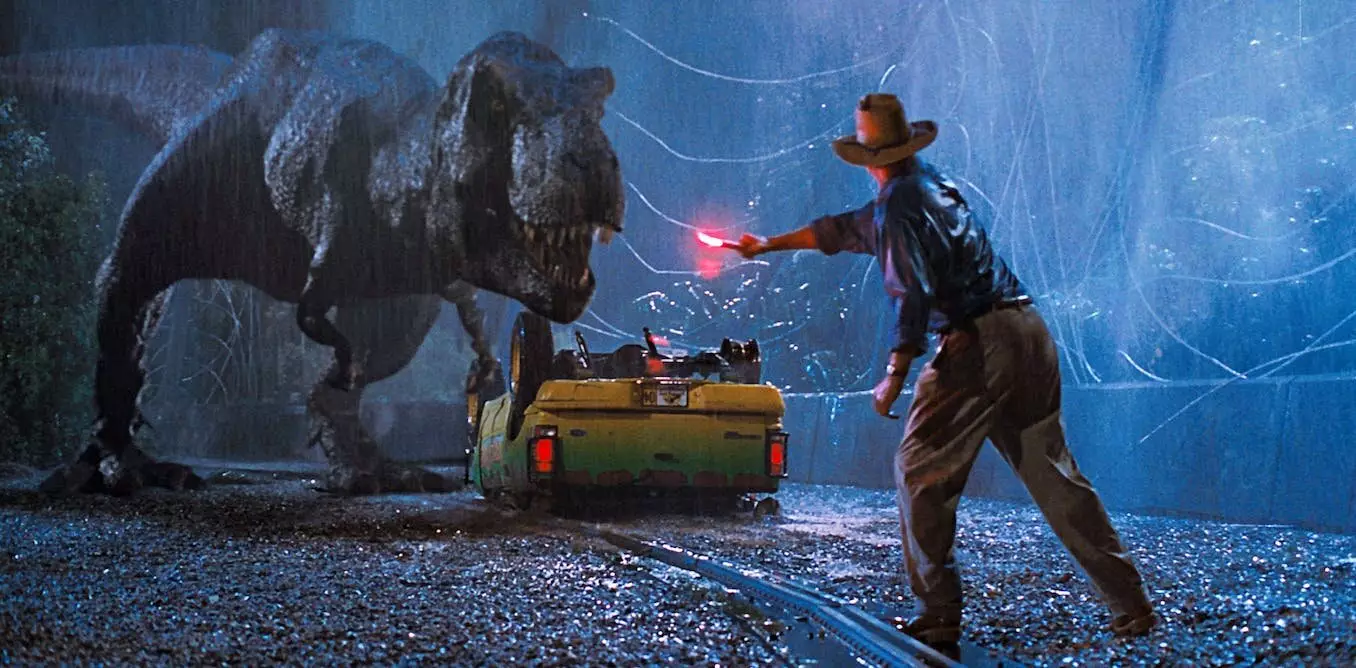This year marks the 30th anniversary of the release of the film, “Jurassic Park”, which changed cinema forever. The movie, based on the novel of the same name by Michael Crichton, used innovative computer-generated imagery (CGI) to create realistic dinosaurs on screen for the first time. The film quickly became a must-see event, captivating audiences with its groundbreaking special effects and becoming the highest-grossing film ever at the time of its release. “Jurassic Park” not only made giant leaps in special-effects filmmaking but also paved the way for myriad subsequent productions featuring creatures of all shapes and sizes.
Michael Crichton’s screenplay for “Jurassic Park” originated in 1983, but the story first found publication as a novel in 1990 and became a bestseller. The attention of Steven Spielberg was drawn to the book, and he decided to adapt it for the big screen. Spielberg was no stranger to big-budget science-fiction filmmaking, having directed some of the most successful special-effects-led films of all time, including “Jaws,” “Close Encounters of the Third Kind,” “Raiders of the Lost Ark,” and “E.T. the Extra-Terrestrial.” “Jurassic Park” was perfect for his next production.
The Evolution of CGI in Jurassic Park
While “Jurassic Park” wasn’t the first film to feature dinosaurs, it was the first to use a combination of animatronics and CGI to create realistic, believable creatures on screen. The film’s special effects team initially chose to use stop-motion animation for long shots and animatronic puppets for close-ups. The stop-motion tests produced good results, but Spielberg and his team wanted to push the boundaries of what was possible further. Dennis Muren from the visual effects company, Industrial Light, and Magic (ILM), provided an alternative approach by using CGI modeling and animation.
Based on pioneering CGI work in “The Abyss” and “Terminator 2: Judgment Day,” Muren and his team produced a test sequence of skeletal dinosaurs. Additional tests featuring a Tyrannosaurus rex with added skin further cemented the realization that this was the way to go for the film. This technique built the model of the dinosaur from bones, added muscle and then finally, the skin.
The success of combining animatronics and CGI is seen in the iconic T. rex attack scene. About 15 minutes of on-screen dinosaurs are featured in the film, of which approximately nine minutes feature Stan Winston’s animatronics, and six minutes of ILM’s CGI animation. A number of animatronic shots feature close-ups of the T. rex before the full-height shots provide the creature’s threat and power. The CGI sections are relatively short, but they have a massive impact on the overall storytelling, not to mention the believability that the event is actually happening in front of us. It’s a true representation of the power of cinema.
The Legacy of Jurassic Park
On its release, “Jurassic Park” became an instant box-office success, and its innovative use of CGI inspired similar productions such as Disney’s “Dinosaur” and the award-winning BBC television series “Walking with Dinosaurs.” But more than that, it helped bring about a revolution in the use of CGI in filmmaking. From those six minutes of animated dinosaurs, CGI has become so integrated into the industry to the extent that nearly all film and television productions feature some form of CGI practice. This can range from digitally cleaning up aspects of the filmed image with removals and replacements to filming with green screen and compositing images or merging actors within full CGI environments.
Thirty years on, “Jurassic Park” remains a significant point in the history of cinema that successfully announced that CGI creatures had arrived, paving the way for the following thirty years of fantasy filmmaking. The film’s use of CGI was groundbreaking, and it set a new standard for special effects in movies. “Jurassic Park” is a classic example of how innovation and creativity can transform the way we experience movies and help to shape the future of filmmaking.



Leave a Reply